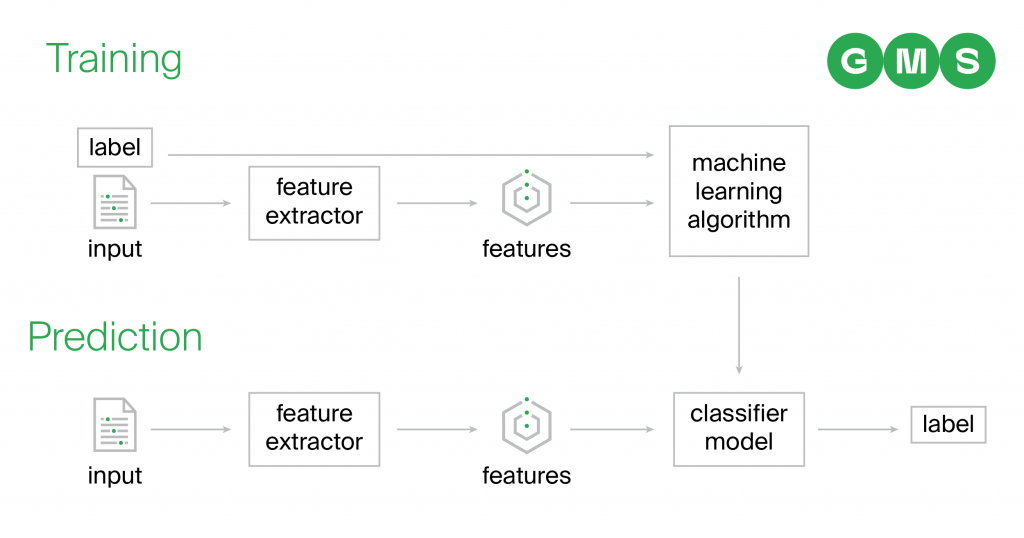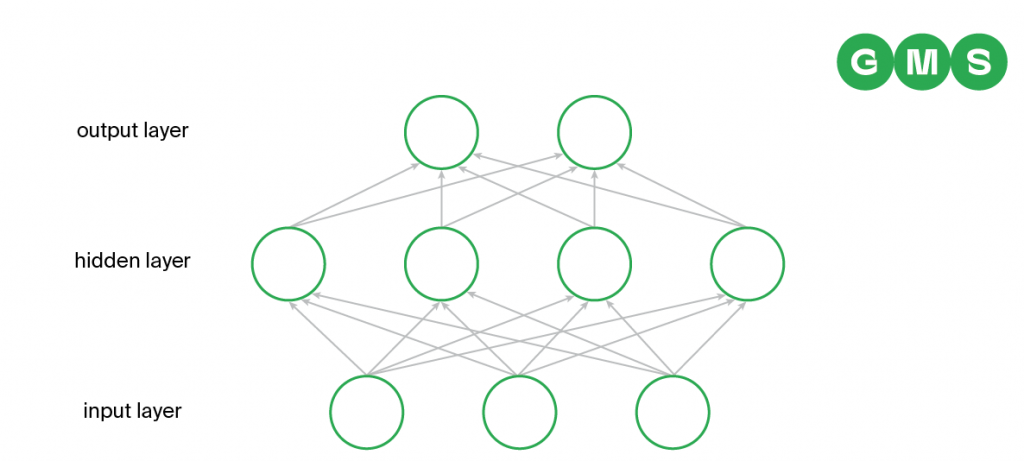More and more people inside and outside the mobile industry are talking about artificial intelligence, or AI.
This is not surprising — computer science has come a long way, and instead of being confined to fictitious examples such as HAL and Orac, artificial intelligence now assists us with various daily tasks in the form of virtual assistants like Alexa and Siri. These are of course more limited than their fictional counterparts, but digital assistance is now a commonplace idea.
When it comes to the mobile industry, most people talking about artificial intelligence are actually often referring to a related field of computer science called machine learning (ML). The difference appears slight, but what it comes down to is the tasks and functions each is intended for.
Without going into issues like the Turing test or Searle’s Chinese Room, it can be said that AI attempts to replicate the decision-making capabilities of human agents. While it makes use of machine learning, AI more generally relies on representing knowledge and solving problems based on models of the world.
Some notable uses of AI have been to beat experts at chess (and recently, the more complex game Go), enable driverless cars, and even to trade stocks and shares (it’s not clear if an AI could beat the proverbial stock-picking monkey in this regard).
Meanwhile, machine learning, unsurprisingly, centres on learning about the world. It focuses on solving more practical and, often, more narrowly defined problems. As such, it contributes to AI decision-making by detecting patterns and inferring connections within sets of data.
Statistical modelling and probabilistic inference are much more central, and machine learning is associated with another modern buzz phrase: Big Data.
When industries like banking, market analysis, and even manufacturing are drowning in data, machine learning offers the opportunity to sift through and organise it, faster and more efficiently than having humans work their way through it all.
Uses of artificial intelligence and machine learning in the mobile industry
A lot of talk about AI in the mobile world centres around improving services, including customer services. Mobile network operators (MNOs) have a wealth of data about their customers, and sifting that data using artificial intelligence and machine learning can help understand those customers. This sifted data can be used in a variety of ways.
The first way is to improve customer service. Linking machine learning systems to customer service points of contact (including AI chatbots or virtual assistants) allows a company to understand their subscribers’ circumstances better and hence quickly and accurately respond to their particular issues. Automated systems can adapt to common customer queries, cut down on customer frustration and resolve issues in a more timely manner.
But some of the most exciting applications of ML are found behind the scenes of an operator’s network. OEM Huawei argues that a shift in emphasis from voice to messaging and mobile internet has significantly altered the way that networks function.
The array of different technologies further complicates this — 2G, 3G, 4G, and Wi-Fi have their own requirements, uses, and deployments. 5G is only adding to this. Managing the most efficient load — either in terms of power or messaging routing — becomes a complicated task involving multiple decisions. Machine learning can sift this mass of data to create a picture of network behaviours, informing operators about the reasons behind failures or inefficiencies, or help make predictions about improving service.
Associated with this is the process of automation. The complex issues that diagnostics and analytics are supposed to bring to light must be addressed, and their very complexity makes it difficult to tackle these in a timely and efficient manner.
AI and ML could take on the role of managing network optimisation by, as Huawei envisages it, dynamically assigning “computational resources… with the goal of having core decision-making algorithms automatically adapt to current radio, user, and traffic conditions”. This goes beyond just optimising the network, as it directly affects service quality and, therefore, customer satisfaction. The ability to better tune network efficiency, in real time, could improve an MNO’s position across several business areas.
Securing a network with machine learning
On top of improving the customer experience and optimising operations, machine learning can also be used for something GMS in very interested in helping operators to enhance: the security of — and control over — their network.
Machine learning is all about looking for patterns, and so finding discrepancies or particular patterns in the data is a natural extension. What this means is that a properly trained machine learning system can detect fraud passing through the network.
Rather than having to manage identifiers, blacklists and whitelists manually, network security can train a machine to recognise patterns in messaging and sort messages into various categories, such as A2P, P2P, P2A, spam, and so on. Fraud and spam are simply treated as another class of message, one which can subsequently be handled by the firewall according to the relevant rules.
Obviously, the other side of this is grey-route reduction. Since a machine can distinguish between A2P and P2P, and determine the origin of messages, it can help the network route traffic properly. Thus, it becomes even easier for the operator to ensure proper messaging termination and protect its revenue.
And because the system can learn, adapting as traffic patterns change, it allows the firewall to evolve with the threat. As it learns about the network, the ML system gets a better understanding of the nature and origins of the messages passing through it, so that it can accurately identify messages even when it has been disguised, or comes with incomplete metadata.
How it works
It has already been mentioned that machine learning is all about looking for patterns. The interesting thing is the way it identifies patterns, through a process of training (hence “machine learning”) whereby the system is told how designers want data segmented and devises ways by which to accomplish this.
For example, a machine will be given a range of identified inputs — such as pictures of dogs labelled “dog” and pictures of cats labelled “cat” — from which it will infer features it can use to identify future inputs (in our dog/cat example, these would be typical coat colours and patterns, size and shape of ears, relative size and so on). This is called supervised learning (there are other kinds), where designers teach machines what to look out for.

The “system” we are talking about here is actually a neural network. At its most basic, this means that machine learning uses software to attempt to model the way that neurons work in an organic brain.
Rather than a single algorithm, machine learning makes use of multiple “nodes” that send information to one another. Raw data is fed into the network (at the input layer), which processes it and delivers sorted or labelled data (the output layer).

In between the input and output layers, there are likely many nodes in any given network, and data may pass through the network multiple times.
Like neurons in a brain, each node receives signals from other nodes until a threshold (determined by that node’s particular algorithm) has been met and it sends its own signal. During training, nodes in a neural network are “weighted”, essentially telling the other receiving nodes how much attention they should pay to it — somewhat similar to “synaptic pruning” in biological brains.
Different nodes can tackle different parts of the data (not, technically speaking, features like “colour”, or “size”, but instead mathematical representations of information, rendered as inputs from other nodes) and the network as a whole adapts by adjusting how reliant its final output should be on particular nodes.
This should be of interest to operators because a neural network can be given examples of pre-labelled messaging traffic so that it learns about the different categories it is to use, and what features messages of each category typically display.
In future, it can then identify, categorise, and filter new messaging without the need for concrete, pre-defined rules. Any messages that it cannot categorise will be flagged and referred to human operators — and the feedback it gets from operators will help to further train the system.
Guided Machine Learning
This feedback process is important to the idea of guided machine learning. Essentially, this is supervised learning with an added layer of human oversight. Machine learning can be incredibly flexible — in the right context.
However, machines tend to inherit biases from the training data, even when this is “merely” implicit. They need to be supervised and reviewed to ensure they are functioning as intended. Furthermore, machines cannot incorporate a sophisticated understanding of outside context: they are dependent on prior data and learning.
Therefore, machines need to be guided and given rules that override and supplement their prior learning. Mobile operators have a few options in this regard. They can implement whitelists — trusted senders whose messaging won’t be blocked or flagged. They can also give the system blacklists of URLs associated with fraud and spam, as well as keywords and phrases spam messages will likely contain.
In this way, operators can exploit the flexibility and automation of machine learning, while manually exercising discretion and control over traffic when needed.
Mobile Network Operators (MNOs) have a lot to gain from developments in the AI field, and messaging shouldn’t be forgotten. Machine learning can enhance messaging services by properly filtering P2P/A2P messaging, blocking spam, and reducing fraud.
Speak to a GMS expert today and find out how we are helping mobile operators improve their network efficiency.

